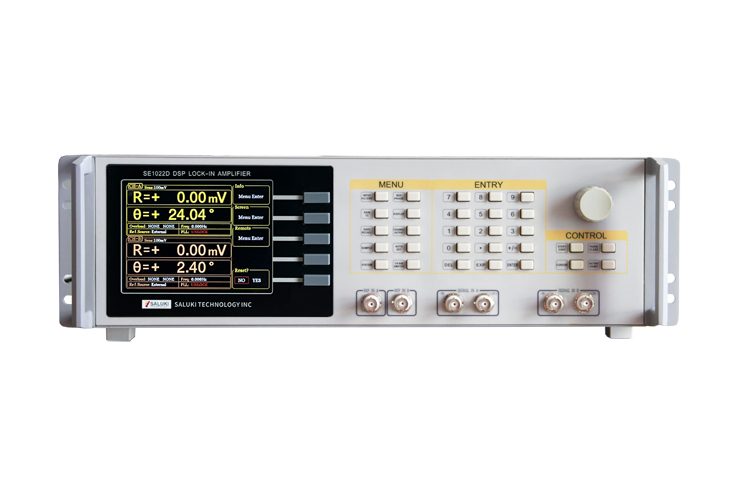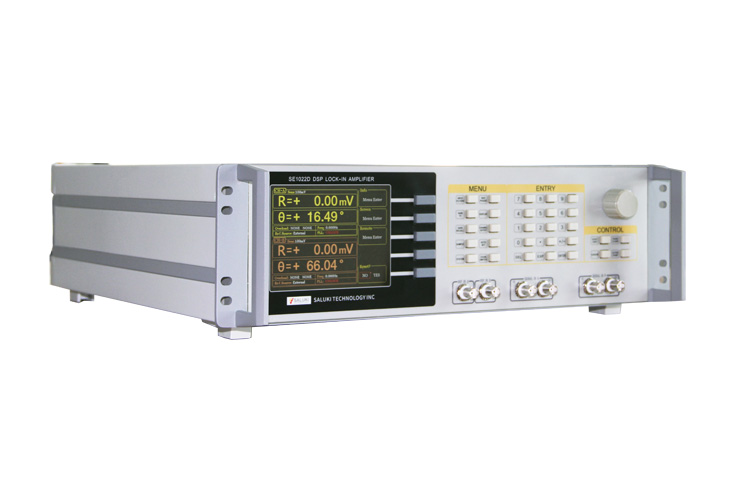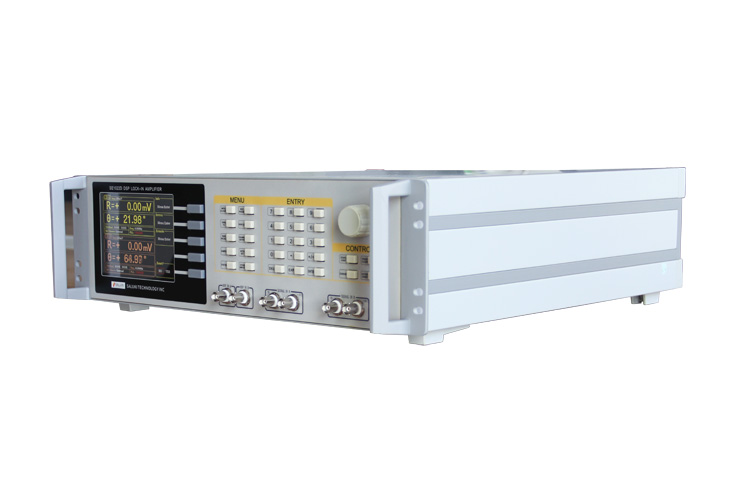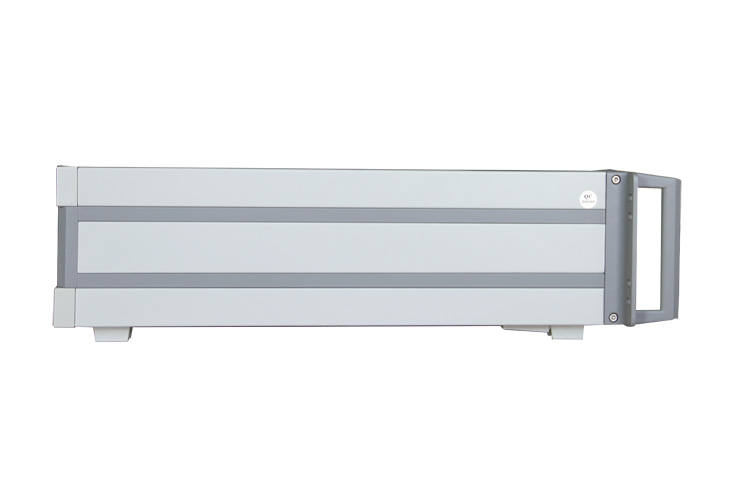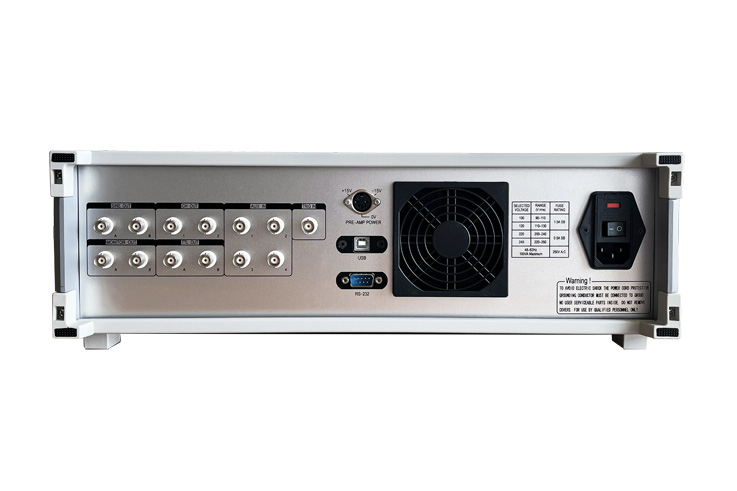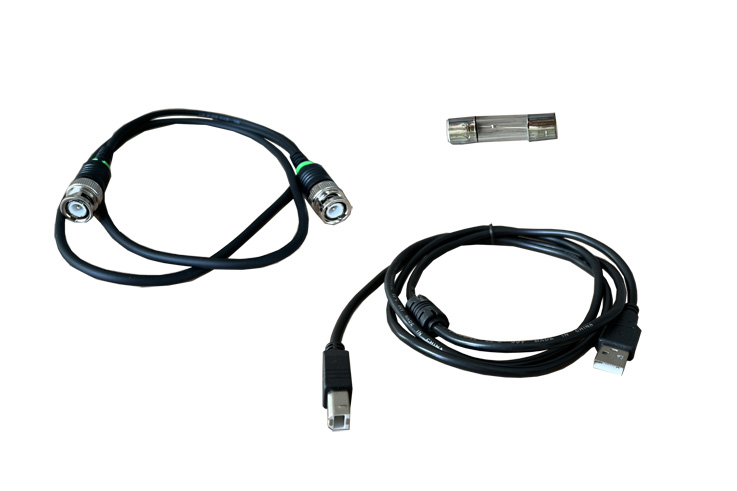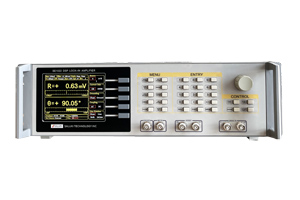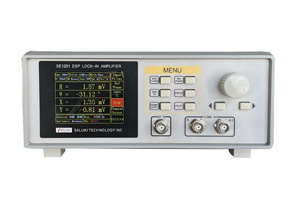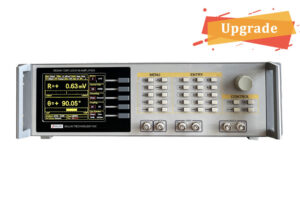SE1022D Digital Lock-in Amplifier provides an excellent performance within its bandwidth from 1 mHz to 102 kHz. More importantly, SE1022D has dual independent input channels and dual independent high precision signal generators. Each input channel and signal generator can be used independently which means that the SE1022D is equivalent to two traditional lock-in amplifiers. Moreover, due to the twin symmetrical design, the two independent input channels and signal generators have ultra-high synchronicity, which meets the measurement requirements demanding extremely high synchronization.
SE1022D DSP Lock-In Amplifier (Dual-channel)
Key Features
2 independent input channels and 2 signal generators
1 mHz to 102 kHz frequency range
1 nV to 1 V full-scale sensitivity
Time constants from 10 µs to 3 ks
> 120 dB dynamic reserve
Noise as low as 5 nV/√Hz @997 Hz
Detect 6 harmonics at one time
Dual-phase structure guarantees higher accuracy
5.6 inch color TFT-LCD screen, single or dual display
Support remote control, embedded a free LabVIEW program
Adopt high-precision 24-bit ADC and FPGA+ARM digital platform architecture, better than DSP architecture
-
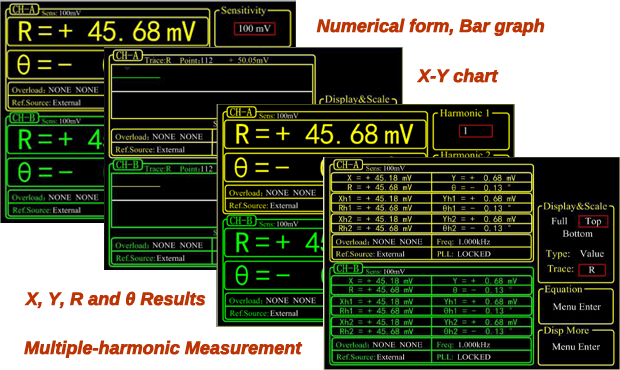
Multiple Application Areas
Scanning microscope: AFM, STM, SPM
Materials: Carrier mobility, Carrier density, Hall effect, Ultrasonic materials
Transport measurement: Conductivity measurement, Impedance measurement
Noise represents: Noise density, Cross-correlation measurement
Optical experiment: Spectral analysis, Spectral measurement, THz measurement, TDLAS
Sensor measuring: Gyroscope, Photoelectric sensor, Resonator, Accelerometer
Magnetic Sensor: SQUIDs, NV color center, Atomic Magnetometer, VSM
Biomedical: Microfluidic
-
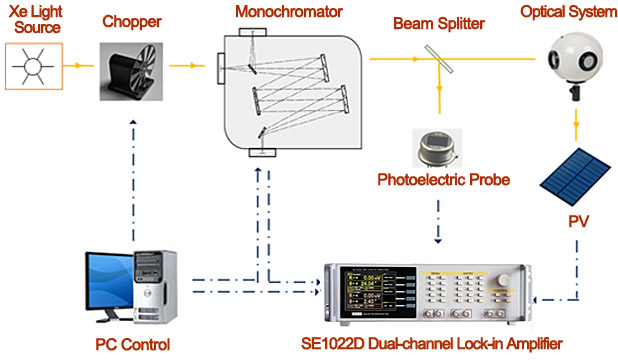
Solar Cell Quantum Efficiency Detection
The quantum efficiency of solar cells is divided into two types: EQE and IQE. The test system includes dual-channel lock-in amplifier, optical chopper, monochromator and other equipments.
The detection light from the monochromator is split into two beams. One beam is converted into photocurrent and input to the channel 1 of lock-in amplifier for comparison. The other beam illuminates the solar cell, and the resulting photocurrent is measured by channel 2 of the lock-in amplifier.
The ratio of the two channel measurements, combined with the relevant formula, allows the quantum efficiency of the solar cell to be calculated.
-

Trusted by Universities and Research Institutes Around the World!
Typical Customers:
• The Hong Kong Polytechnic University
• Universität Regensburg
• Rice University
• Weizmann Institute of Science
• University of Wisconsin-Madison
• Massachusetts Institute of Technology
• University of Texas at Austin
• Northeastern University
You can trust us !
| 1. Signal Channel | |
| Voltage Input Mode | Single-ended or Differential |
| Full-scale Sensitivity | 1 nV to 1 V in a 1-2-5 sequence 1 fA to 1 µA |
| Current Input | 106 or 108 V/A |
| Impedance | • Voltage: 10 MΩ // 25 pF, AC or DC coupled • Current: 1 kΩ to virtual ground |
| C.M.R.R | > 100 dB to 10 kHz, decreasing by 6 dB/oct |
| Dynamic Reserve | > 120 dB |
| Gain Accuracy | 0.2% typ, 1% max |
| Voltage Noise | 5 nV/√Hz at 997 Hz |
| Current Noise | • 15 fA/√Hz at 97 Hz • 13 fA/√Hz at 997 Hz |
| Line Filters | 50/60 Hz and 100/120 Hz |
| Gounding | BNC shield can be grounded or floated via 10 kΩ to ground |
| 2. Reference Channel | |
| Input | • Frequency range: 1 mHz to 102 kHz • Reference input: TTL or Sine • Input impedance: 1 MΩ//25 pF |
| Phase | • Resolution: 1 µdeg • Absolute phase error: < 1 deg • Relative phase error: < 1 mdeg • Orthogonality: 90° ± 0.001° • Phase noise: (Internal ref.) Synthesized, <0.0001°rms at 1 kHz; (External ref.) 0.001°rms at 1 kHz (100 ms time constant, 12 dB/oct) • Drift: <0.01°/℃ below 10 kHz, <0.1°/℃ above 10 kHz |
| Harmonic Detection | 2F, 3F, …nF to 102 kHz (n<32767) |
| Acquisition Time | • Internal ref.: instantaneous acquisition • External ref.: (2 cycles + 5 ms) or 40 ms, whichever is larger |
| 3. Demodulator | |
| Stability | • Digital output: no zero drift on all setting • Display: no zero drift on all setting • Analog output: <5 ppm/℃ for all dynamic reserve settings |
| Harmonic Rejection | -90 dB |
| Time Constant | • 10 µs to 3 ks (<200 Hz) • 10 µs to 30 s (>200 Hz) (6, 12, 18, 24 dB/oct rolloff) |
| Synchronous Filters | Available below 200 Hz (18, 24 dB/oct rolloff) |
| 4. Internal Oscillator | |
| Frequency | • Range: 1 mHz to 102 kHz • Accuracy: 2 ppm + 10 µHz • Resolution: 1 mHz |
| Distortion | • -80 dBc (f < 10 kHz) • -70 dBc (f > 10 kHz) |
| Amplitude | 0.001 to 5 Vrms |
| Accuracy | 1% |
| Stability | 50 ppm/℃ |
| Output | Sine output on rear panel, and TTL sync output on rear panel |
| 5. Interface | USB2.0 and RS-232 interface |
| 6. Outputs | |
| CH1 and CH2 Outputs | • Function: output X, Y, R, θ • Output voltage: ±10 V full scale, 30 mA max output current |
| 7. Display | |
| Screen | 5.6 inch, 640×480 TFT |
| Screen Format | Single or dual display |
| Display Quantities | Each display shows one trace, traces can be defined as X,Y,R,θ |
| Display Types | Numerical form, bar graph and strip chart |
| 8. General | |
| Power Requirement | • Voltage: 220 – 240 VAC, 100 – 120 VAC (optional) • Frequency: 50/60 Hz • Power: 50 W |
| Dimension | • 473 (W) × 160 (H) × 490 (D) mm (with feet) • 473 (W) × 147 (H) × 490 (D) mm (without feet) |
| Weight | 11 kg |
Main Machine
| Module No. | Item | Description |
| SE1022D | Digital Lock-in Amplifier | 1 mHz to 102 kHz, 1 nV to 1 V full-scale sensitivity, dual independent input channels and signal generators |



